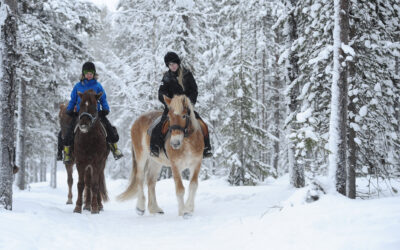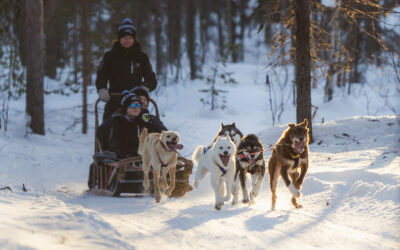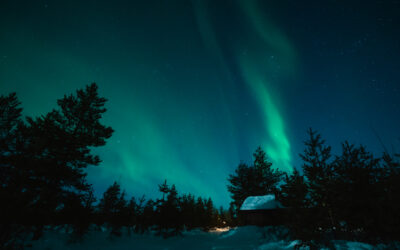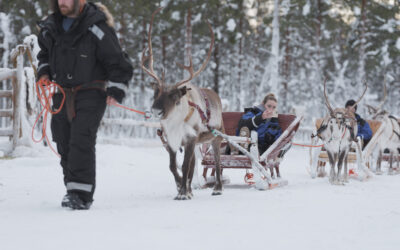Fall in Kittilä, Finnish Lapland, brings a dramatic temperature transition from late summer warmth to early winter chill. In August, daytime temperatures typically range from 10-18°C, gradually decreasing to 5-12°C in September. October sees a significant drop with temperatures between -2°C and 5°C, while November temperatures commonly fall to between -5°C and -15°C. This cooling progression transforms the landscape, bringing the spectacular ruska (autumn colors) followed by the first snowfalls, creating perfect conditions for viewing the northern lights as nights grow longer from late August onwards.
What are typical temperatures during fall months in Kittilä?
Fall in Kittilä is characterized by a gradual but significant cooling pattern that transforms the landscape from summer’s lingering warmth to the first embrace of winter. Each month brings distinct temperature ranges and natural phenomena that make autumn in Finnish Lapland a unique experience.
August marks the beginning of fall with relatively mild conditions. Daytime temperatures typically hover between 10-18°C, creating comfortable conditions for outdoor exploration. Evenings cool down to approximately 5-10°C, requiring a light jacket or sweater. The days remain long, though noticeably shorter than summer’s midnight sun phenomenon.
September brings a more pronounced cooling trend as temperatures drop to daytime averages of 5-12°C. Morning frost becomes increasingly common, especially in the latter half of the month. Night temperatures can dip close to freezing (0-5°C), providing the perfect conditions for the development of the stunning ruska colors across the landscape.
October marks a decisive shift toward winter conditions. Daytime temperatures typically range from -2°C to 5°C, and the first significant snowfalls often occur during this month. Night temperatures regularly drop below freezing, ranging from -5°C to 0°C. This month represents a transition period where autumn and early winter conditions can alternate, sometimes dramatically.
November firmly establishes early winter conditions in Kittilä. Daytime temperatures typically fall between -5°C and -10°C, while night temperatures commonly reach -10°C to -15°C, though colder spells can bring temperatures as low as -20°C. Snow cover usually becomes permanent during this month, transforming the landscape into a winter wonderland.
The rapid temperature change during fall months contributes to the magical atmosphere of Lapland, creating ideal conditions for witnessing the northern lights as dark nights return and the landscape transforms through its spectacular autumn colors into the first pristine snowfalls.
When does the ruska season begin in Finnish Lapland?
The ruska season in Finnish Lapland typically begins in early September and reaches its peak by mid-September, lasting approximately 2-3 weeks. This spectacular natural phenomenon transforms the landscape into a breathtaking tapestry of yellows, oranges, and deep reds, creating one of the most photogenic periods to visit Kittilä and the surrounding areas.
In Kittilä specifically, the ruska colors start appearing in early September as the birch trees begin their transformation first, turning brilliant yellow. This creates a stunning contrast against the deep green of the evergreen pines and spruces that dominate much of the landscape. The dwarf birch and blueberry shrubs that carpet the forest floor turn vibrant red, adding another layer to this natural color palette.
What makes ruska in Lapland particularly special is how the colors reflect in the region’s numerous lakes and rivers, essentially doubling the visual impact when conditions are calm. Early morning mist rising from water bodies during this season creates an almost mystical atmosphere, especially when combined with the low autumn sunlight that bathes everything in a golden glow.
The timing of ruska varies slightly each year depending on temperature patterns, rainfall, and the timing of the first frosts. These early frosts actually trigger the color change as trees prepare for winter, but without damaging the leaves. A perfect ruska season requires the right balance of cool nights, sunny days, and moderate rainfall.
For visitors to Kittilä, the ruska season offers unique experiences. Hiking through multicolored forests becomes an unforgettable sensory experience, with the crunch of fallen leaves underfoot and the scent of autumn in the air. This is also when the forest floor becomes abundant with berries and mushrooms, adding yet another dimension to the autumn experience.
We recommend planning your visit to coincide with mid-September for the highest probability of experiencing peak ruska colors. This timing also aligns with increasingly dark evenings that provide opportunities for northern lights viewing, creating a perfect combination of daytime color and nighttime aurora displays.
Can you see northern lights during fall in Kittilä?
Yes, fall is actually one of the best seasons to witness the northern lights in Kittilä. From late August onwards, as evenings become progressively darker, the auroras become increasingly visible when solar activity is present. September and October offer particularly favorable viewing conditions with typically clearer skies than winter months, while still providing enough darkness and often milder temperatures for comfortable outdoor viewing.
The northern lights season in Kittilä effectively begins in late August when true darkness returns after the midnight sun period. By mid-September, dark night skies last from approximately 9:00 PM until 5:00 AM, providing ample opportunity for aurora hunting. October extends these dark hours even further, increasing your chances of catching a display.
What makes autumn particularly special for northern lights viewing is the combination of natural elements. The possibility of seeing the auroras reflected in the still-unfrozen lakes creates breathtaking photo opportunities. During ruska season, you might even capture the rare sight of colorful autumn foliage illuminated by the dancing lights above – a truly magical Lapland experience that combines two of the region’s most spectacular natural phenomena.
Fall also provides more moderate temperatures compared to winter months, making extended periods of outdoor viewing more comfortable. In September and early October, temperatures typically allow for aurora watching without the extreme cold of midwinter, though you’ll still need proper clothing as evening temperatures can drop considerably.
Our Aurora Wilderness Cabins enhance the northern lights experience significantly. Nestled in the serene wilderness of Levi, Finnish Lapland, these cabins feature large windows, including a roof window, specifically designed for stunning views of the night sky. From late August to early April, you might witness a sky full of stars or the Northern Lights from the comfort of your cabin. Our guide will escort you through the woods to ensure a comfortable arrival, and the overnight experience includes a light evening meal and breakfast featuring Finnish specialties.
While northern lights are never guaranteed as they depend on solar activity and clear skies, the fall months in Kittilä offer excellent conditions that combine dark nights, potential for clear weather, and the unique backdrop of autumn landscapes to create truly memorable aurora experiences.
What should you pack for a fall trip to Lapland?
Packing for a fall trip to Lapland requires thoughtful preparation for rapidly changing conditions and temperatures that can range from mild to quite cold. The key to comfort is a versatile layering system that allows you to adjust to variable weather and different activity levels throughout your stay in Kittilä.
Base layers form the foundation of your packing list. Pack thermal underwear (preferably merino wool or synthetic materials that wick moisture) for both upper and lower body. These provide essential insulation while moving moisture away from your skin, keeping you dry and comfortable during activities.
For mid-layers, bring fleece jackets or wool sweaters that provide insulation by trapping warm air. Pack several options of varying thicknesses that can be combined as temperatures drop. Fleece-lined trousers or softshell pants offer good protection for your legs while allowing freedom of movement for hiking and other activities.
Your outer layer should include a waterproof and windproof jacket – ideally one with breathing capability to prevent overheating during activities. Waterproof trousers are also essential, particularly in October and November when snow becomes likely. A warm, insulated coat becomes necessary for October and November evenings when temperatures can drop significantly below freezing.
Accessories make a significant difference in comfort. Pack:
- Warm hat that covers your ears
- Scarf or neck gaiter
- Gloves (consider both thin liner gloves and thicker waterproof options)
- Warm socks (wool or wool blend, bring several pairs)
- Waterproof hiking boots with good grip
- Thermal insoles for extra foot warmth
For northern lights viewing, additional specialized items will enhance your experience:
- Insulated snow boots for standing in snow (particularly for October/November)
- Chemical heat packs for hands and feet
- Headlamp with red light option (to preserve night vision)
- Extra insulation layers for stationary activities
For ruska season hiking, consider bringing:
- Comfortable daypack
- Reusable water bottle
- Small container for berry picking
- Camera with spare batteries (cold depletes battery life faster)
- Binoculars for wildlife spotting
Don’t forget practical items like lip balm and moisturizer to combat the dry air, sunglasses for the low autumn sun’s glare, and a swimsuit if you plan to experience a traditional Finnish sauna. We provide specialized gear for many of our guided activities, but these personal items will ensure your comfort throughout your Lapland adventure.
Which fall activities are available in Kittilä?
Fall in Kittilä offers a diverse range of activities that showcase the unique beauty of this transitional season in Finnish Lapland. From the vibrant colors of ruska to the first snow, autumn provides some of the most authentic wilderness experiences with fewer tourists than the peak winter season.
Hiking through the colorful forests during ruska season stands as one of the most rewarding fall activities. The network of well-maintained trails around Kittilä caters to all experience levels, from gentle nature walks to more challenging terrain. Our guided nature walks include expert interpretation of the local ecosystem, pointing out plants, animal tracks, and birds you might otherwise miss. These excursions can be tailored from 1-3 hours depending on your preferences and physical condition.
Foraging for autumn’s natural bounty becomes a highlight for many visitors. Our berry picking excursions take you to prime locations for finding cloudberries, blueberries, lingonberries, and crowberries – the superfoods of the north. Each participant receives a container for collecting berries, and guides share knowledge about their nutritional benefits and traditional uses. Similarly, guided mushroom hunting trips provide an introduction to edible species found in Lapland’s forests during fall months.
Wildlife viewing opportunities peak during autumn as animals prepare for winter. Guided wildlife excursions focus on spotting reindeer, elk, and various bird species. The reduction in foliage makes spotting animals easier, while the cooler temperatures bring them into more accessible areas. Photography enthusiasts particularly appreciate the combination of wildlife against the backdrop of autumn colors.
As temperatures drop in October and November, early winter activities become available. These might include the first snowshoe hikes of the season, introductory cross-country skiing on early snow trails, and ice fishing on freshly frozen lakes. These activities provide a unique opportunity to experience the transition between seasons that many visitors miss.
Evening activities center around northern lights viewing opportunities. Our specialized aurora hunting excursions take you to optimal viewing locations away from light pollution. These can be combined with cozy campfire experiences where traditional stories are shared while waiting for the lights to appear.
Accommodation Options
Polar Lights Tours offers three different accommodation options to enhance your Lapland experience:
Aurora Wilderness Cabin
Our Aurora cabins, nestled in the serene wilderness of Levi, Finnish Lapland, offer a peaceful retreat. Our guide will escort you through the woods to ensure a comfortable arrival. From late May to late July, you can enjoy the Midnight Sun, while from late August to early April, you might witness a sky full of stars or the Northern Lights. The cabins feature large windows, including a roof window, for stunning views. Inside, you’ll find an eco-toilet for convenience. This overnight experience includes a light evening meal and breakfast featuring Finnish specialties.
Cozy Kammi Experience
Spend a night in our round and cozy kammi building, where you can experience the intimacy of the wilderness while sleeping warmly in sleeping bags. Located on our horse and husky farm, the kammi offers an opportunity to meet and learn about our animals in the evening. Enjoy a dinner made with Finnish ingredients inside the kammi, and then relax in a hammock outside, gazing at the night sky and possibly seeing stars or the Northern Lights. In the morning, wake up to find a breakfast basket waiting outside.
Wilderness Caravan Adventure
Stay in a motorhome, caravan, private tent, or hammock. Our farm is located along Muonio Road, about a 10-minute drive from Levi towards Muonio. Enjoy nature, take a dip in the river, or rent a barrel sauna. We have 5 electric caravan pitches, unlimited tent and hammock spots, and offer all necessary services: Kammi atmospheric cooking and an open fire in the chamber, toilets and indoor WC, water point, electrical outlets (5 pcs), and drainage of chemical toilets and grey water. Guided tours to get to know our horses and dogs are included in the price!
All our activity packages complement our accommodation options, creating a cohesive experience. For instance, guests staying in our Aurora Wilderness Cabins can easily combine daytime forest walks with evening aurora viewing, while those interested in wildlife can arrange specialized guiding services that connect directly with their chosen accommodation. When booking your fall accommodation in Kittilä, consider how your stay complements your planned activities.




